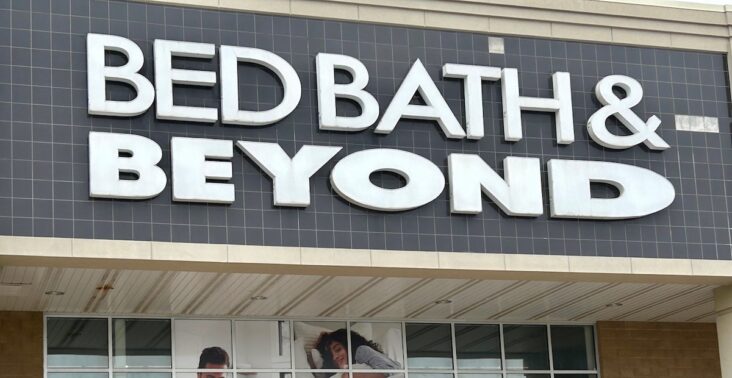NRF: More retail store closures, fewer openings announced in first quarter
by May 9, 2023 2:25 pm 1,443 views

The first quarter of 2023 was rough for many U.S. retailers with 1,760 store closings between January and March, up 177% from a year ago, the National Retail Federation (NRF) reports. During that same period there were 2,750 new store announcements, down 37.5%.
The trade group said the drop in new stores and rise in closures is not a surprise given the tougher consumer climate after two years of stimulus-induced growth, excess pandemic savings and a stronger job market. As spending has shifted away from goods toward services consumer sentiment remains shifty amid recession concern, higher borrowing costs and persistent inflation pressures.
CB Insights reports that retailers face old challenges in addition to combating rising prices and a pullback in consumer spending. The biggest reasons more retailers will file for bankruptcy this year is mounting debt, rising borrowing costs, and weaker consumer demand, according to analysts at CB Insights. Some reports indicate that retail bankruptcies will rise again in 2023.
A growing number of marginal retailers were propped up by stimulus and landlord concessions during the pandemic and now are struggling as discretionary spending slows amid inflationary pressures from rising rents, higher wages and product costs, according to retail analysts.
Party City was the first retailer to file bankruptcy this year. The party supply store said a helium shortage, increased pandemic-related costs, and an inflation-driven slowdown in consumer spending led to its insolvency. Party City has also run up against rising competition from big box and online retailers. The chain secured a $150 million bankruptcy loan and is planning to keep operations running while it restructures $1.7 billion in debt. To date, the chain has slated about 30 store closures through the quarter. The chain still has around 750 U.S. stores which remain open.
CB Insights said in the first quarter of this year, Foot Locker announced the closure of 400 stores, Things Remembered said it would close all 130 stores and Children’s Place announced 100 more store closures from its base of 600.
Tuesday Morning filed bankruptcy in February with the closure of about 200 locations. This past week the contagion spread as the off-price retailer announced the closure of the remaining 250 stores the company had hoped to remain open following its second bankruptcy filing in three years. David’s Bridal filed for bankruptcy in April, just a few days after the company announced it would lay off more than 9,000 employees. This is the second bankruptcy filing for the wedding gown retailer in five years.
Bed Bath & Beyond also is in the midst of liquidation with the closure of all of its stores after several failed attempts to turn the business around over the past five years. Faced with declining revenue and a cumbersome debt load, the company tried to reduce costs by cutting back on trademark offerings like mailer coupons and name-brand inventory. Despite getting some bridge funding the retailer called it quits in April closing 360 Bed Bath & Beyond locations and 120 BuyBuy Baby locations.
Analysts with UBS recently noted they expect 50,000 stores will close over the next five years and if the economy does fall into a recession they said that figure could balloon to 90,000 stores. Smaller operations that employ 500 or fewer are the most vulnerable, UBS noted. While 90,000 seems like a staggering number, UBS analyst said it’s 5% of the more than 940,000 U.S. retail stores.
UBS said the ever-growing prominence of online shopping, increased borrowing costs, and customers tightening their wallets due to inflation are primary causes of store closures. The UBS report predicted 13,840 of the closures will be clothing stores, 9,190 electronic stores and 4,090 furniture stores. UBS expects home improvement stores to lose only 210 locations and auto parts stores to stay steady.
Job growth and year-over-year sales have increased at home improvement and auto parts stores, which are two reasons why that retail sector likely won’t suffer as many closings, UBS said. The analysts also said major retailers like Costco, Target, Walmart and Home Depot could benefit from store closures. UBS said the closings of smaller operators would mean roughly $210 billion in retail sales would be up for grabs, which translates to a $1,600 annual spend per household that could benefit leading retailers.
While closures are expected to rise, the number of new store openings this year will likely remain lower than a year ago as rents continue to rise, labor remains tight and inflationary pressures continue to squeeze operating margins, according to UBS.
NRF said 43% of the new store openings announced this year have been from dollar stores, off-price retailers, discounters and wholesale clubs who combined for more than 1,100 openings announced in the first quarter. That does not include 1,050 new store openings this year announced by Dollar General in December 2022, or the 925 to 1,000 new stores Five Below said it plans to open by the end of fiscal 2025.
Other retailers that announced large numbers of new stores in the first quarter of 2023 include Foot Locker, which said at a March investor event it will open more than 300 off-mall stores by its fiscal 2026. Skechers said in February it would open 100 to 120 new company-owned stores this year. Bath & Body Works said in February it would open about 90 new stores in 2023 while closing about 50 stores. In February, Sam’s Club announced 30 new locations by 2027 and Costco said it would add 15 new U.S. clubs this year.
